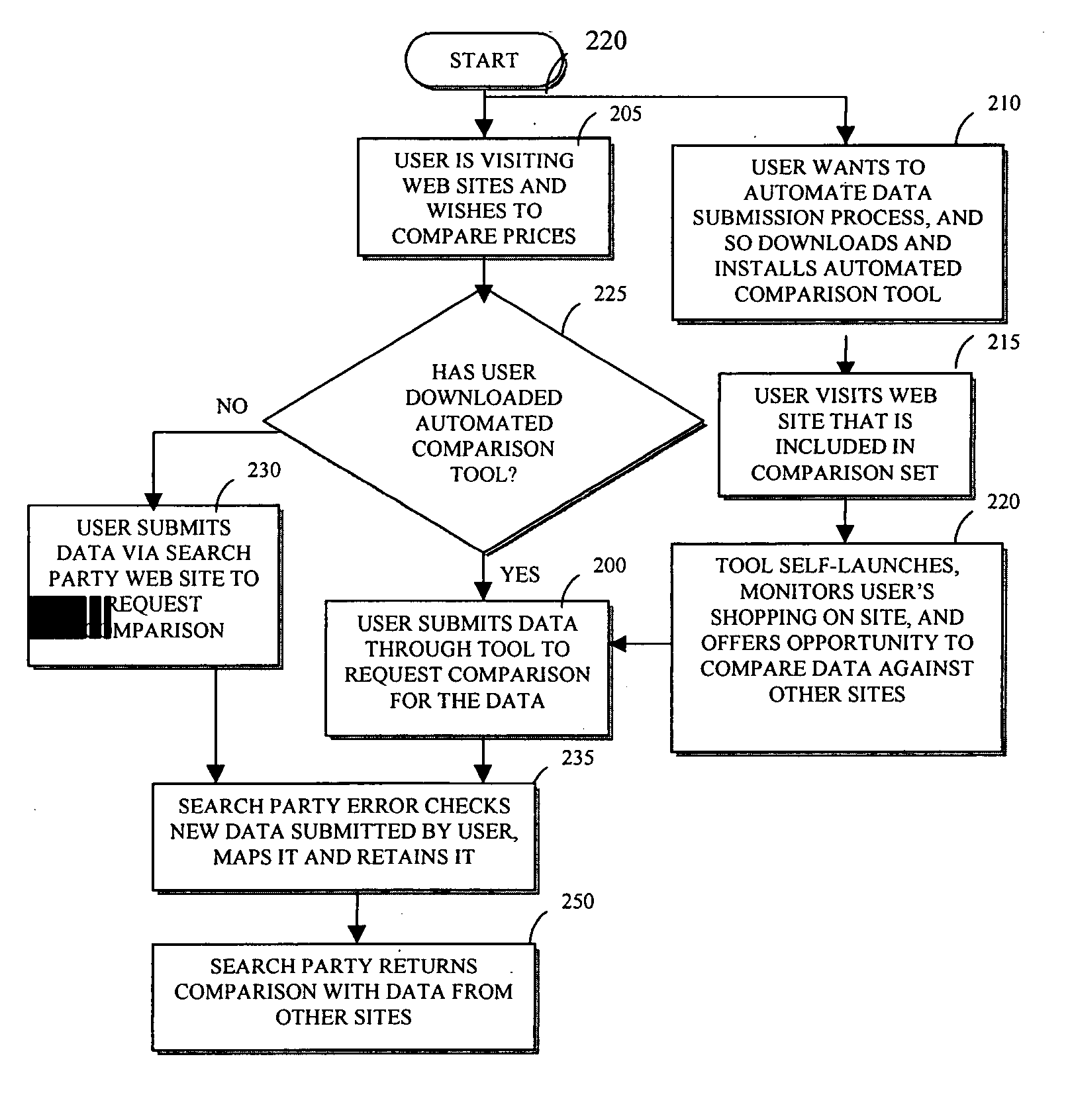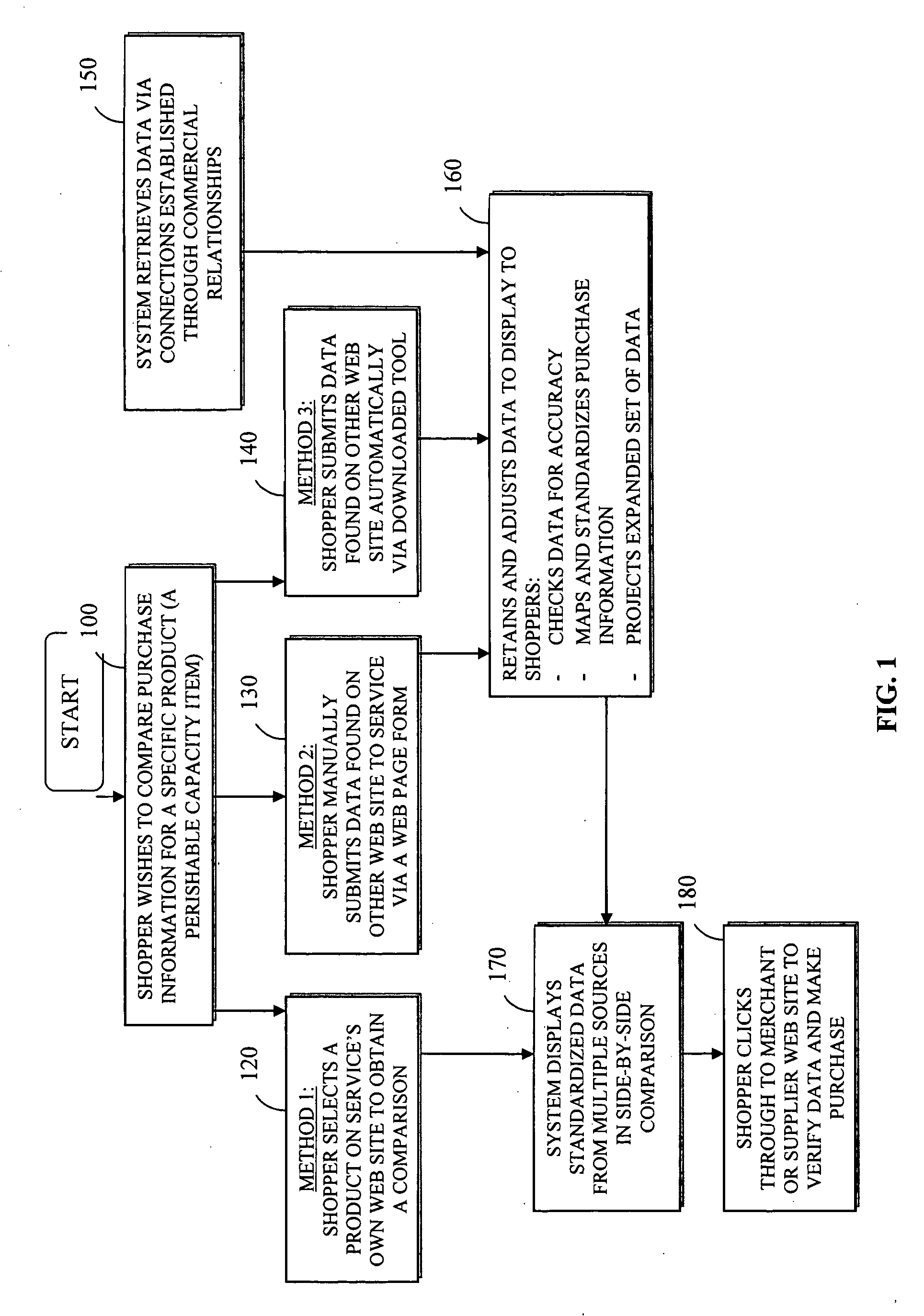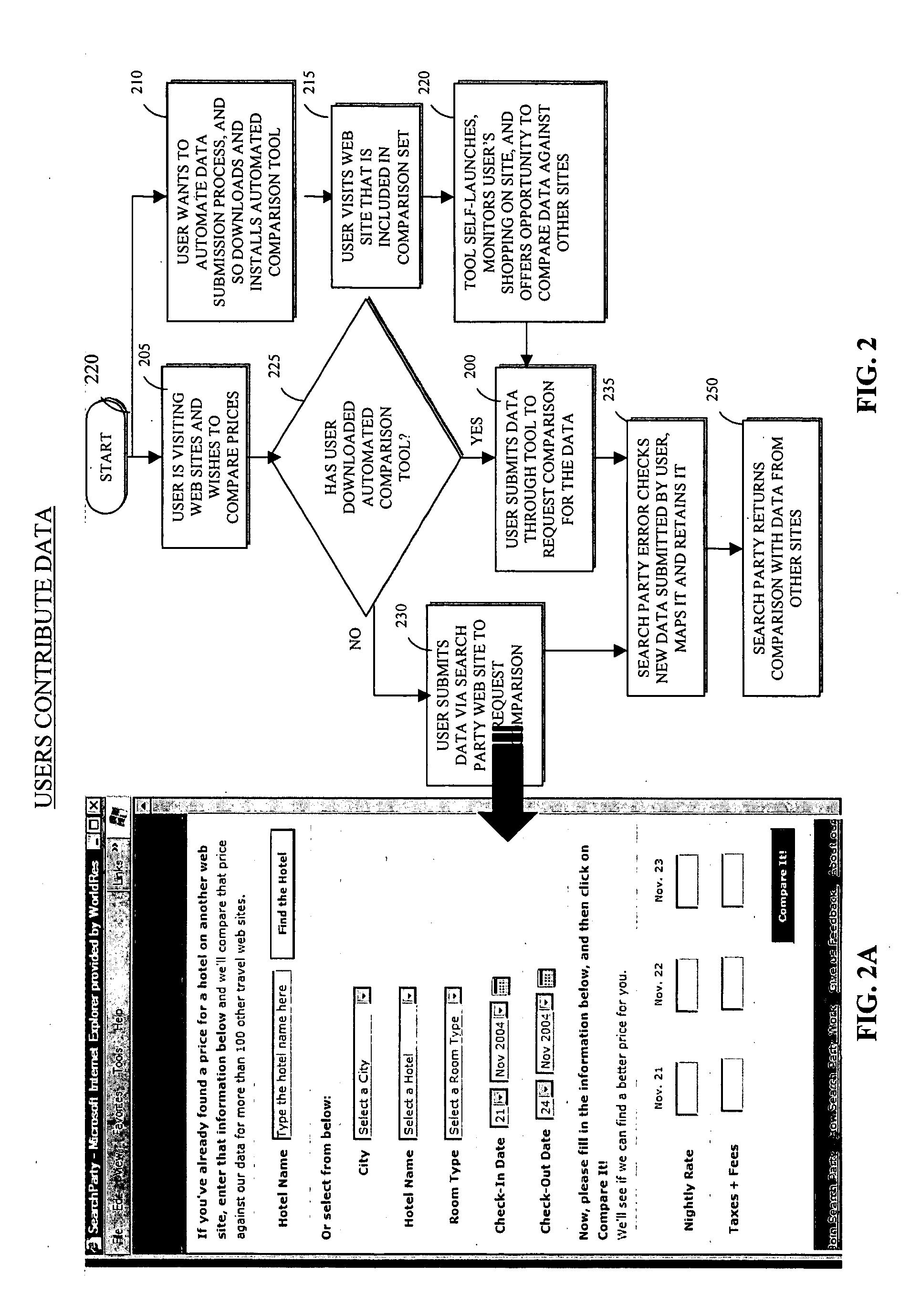Method and system for aggregating, standardizing and presenting purchase information from shoppers and sellers to facilitate comparison shopping and purchases
a technology of purchase information and information, applied in the field of online search and electronic commerce, can solve the problems of high fixed cost, low variable cost, low residual value, and difficult for comparison shopping sites to aggregate purchase information on perishable capacity goods, so as to achieve efficient and valuable marketplace, add value for merchants
- Summary
- Abstract
- Description
- Claims
- Application Information
AI Technical Summary
Benefits of technology
Problems solved by technology
Method used
Image
Examples
first embodiment
[0035] In a first embodiment, shoppers go 120 to the service's own web site, or a ‘private label’ version of that web site co-produced with a third party, and select a product based on the product information. In the case of a hotel, the shopper may select a city and check-in / check-out dates, and then select a specific hotel and room type. Once the product is selected, the shopper hits a button to request a comparison of purchase information from different merchants and suppliers that sell that product. The service returns 170 a display of purchase information from different merchants and suppliers in a side-by-side format. This information would come from the service's database cache and from its real-time connections to merchants and suppliers. This first method is illustrated in more detail in FIG. 5.
second embodiment
[0036] In a second embodiment, the shopper sees product and purchase information on a third-party web site, and wishes to compare that purchase information against purchase information from other merchant and supplier web sites for that same product. The shopper goes 130 to a specific page on the service's web site and manually enters into a form the product and purchase information found on the third-party web site. The shopper then hits a button on the form to submit this data to the service and request a comparison of this data against purchase information from other merchants and suppliers. The service returns 170 a display of the submitted information and other purchase information in a side-by-side format. The information submitted by the shopper is then retained 160 in the service's database for possible display to other shoppers requesting comparisons for the same product. This second method is illustrated in more detail in FIG. 2A.
third embodiment
[0037] In a third embodiment, the shopper first downloads an application from the service's web site. This application automates the process of submitting product and purchase information from third party web sites. The application automatically detects when the shopper is visiting a web site that offers products compared by the service, and which can be mapped to the product and purchase information in the service's database. When a shopper visits one of these sites, the application automatically opens 140 another window in the shopper's browser. Through this window, the service communicates with the shopper and tells them if the service can provide a comparison for the product the user is viewing through the browser. If the service can provide a comparison, the shopper can hit a button in the window to submit to the service the product and purchase information displayed in the web browser, and request and obtain a comparison of this purchase information against information from ot...
PUM
 Login to View More
Login to View More Abstract
Description
Claims
Application Information
 Login to View More
Login to View More - R&D
- Intellectual Property
- Life Sciences
- Materials
- Tech Scout
- Unparalleled Data Quality
- Higher Quality Content
- 60% Fewer Hallucinations
Browse by: Latest US Patents, China's latest patents, Technical Efficacy Thesaurus, Application Domain, Technology Topic, Popular Technical Reports.
© 2025 PatSnap. All rights reserved.Legal|Privacy policy|Modern Slavery Act Transparency Statement|Sitemap|About US| Contact US: help@patsnap.com



